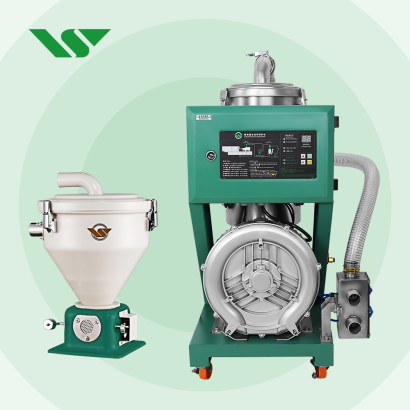Enhancing Efficiency and Quality with an Automated Feeding System
2024-10-31 Page view:
Automated feeding systems have transformed the production landscape, particularly in industries like chemical processing and plastics manufacturing. These advanced systems bring efficiency, precision, and scalability, creating environments where minimal human intervention is needed. By automating feeding, weighing, control, and monitoring, businesses can reduce operational costs, maintain a clean workspace, and ensure product quality. This article explores the main components, features, and benefits of automated feeding systems and provides insights into maintaining them for optimal performance.

The Core Components of an Automated Feeding System
Automatic feeding system consist of several critical components, each with a distinct role in ensuring smooth, reliable operations. Here are the six key elements:
Control System: At the heart of the system, the control component uses an industrial-grade microcomputer and a Mitsubishi PLC communication module to manage input/output. These elements, along with manual-automatic control switches and indicator lights, are housed in a central cabinet for ease of use.
Weighing System: Featuring a high-precision, explosion-proof weighing module, this part accurately monitors and controls material weight, ensuring precision in the production process.
Software Interface: Customisable software aligns with each plant's unique operational needs, allowing for efficient batch processing and management.
Execution Mechanism: Electromagnetic proportional valves and pneumatic ball valves control the flow of materials in and out, enabling precise feeding and discharging.
Feeding Mechanism: Gear, centrifugal, and diaphragm pumps handle the movement of materials, ensuring they reach their destination quickly and efficiently.
Pipeline and Monitoring: The pipeline system, complete with leak-prevention and monitoring functions, allows safe material transport and real-time diagnostics.
Key Advantages of Automated Feeding Systems
Auto feeding system offer substantial benefits that make them an ideal investment for modern manufacturing:
Labour and Cost Savings: By reducing the need for manual labour, automated feeding systems cut costs significantly and improve operational consistency.
Improved Quality Control: Automated weighing and precision control prevent material contamination and waste, boosting the consistency of product quality and supporting the quality control process.
Enhanced Workplace Safety: With integrated monitoring and leak prevention, these systems promote a safer, cleaner workspace, reducing the risk of accidents and contamination.
Streamlined Operations: Automated systems minimise interruptions, increase production speed, and enable more predictable output rates, which is beneficial for scaling production and meeting customer demand.

Maintaining an Automated Feeding System for Long-Term Performance
Proper maintenance is key to the longevity and efficiency of an automated feeding system. Daantai, a trusted provider of centralised feeding systems, recommends a structured maintenance schedule to keep systems running smoothly:
Annual Maintenance: Conduct a full inspection and replace any worn components. This can be done during holiday periods to minimise production disruptions.
Quarterly Checks: Inspect critical system elements like fan temperature, pipeline tightness, and valve functionality. Ensure all components are functioning optimally.
Monthly Inspections: Check pipeline connectors, clean filters, and inspect air cut-off and material cut-off valves to ensure smooth operations.
Daily Monitoring: Designate a responsible individual for daily system checks, including parameter settings, system sounds, and material flow. Daily tracking prevents unexpected shutdowns and improves efficiency.
Why Choose Wensui for Automated Feeding Solutions?
Choosing the right automated feeding system is essential for production efficiency and quality. Wensui's centralised feeding systems are known for their reliability, energy efficiency, and user-friendly design. With advanced features like explosion-proof weighing, high-quality pipeline materials, and powerful industrial control, Wensui systems support long-term, scalable operations. Additionally, Wensui provides excellent after-sales service, helping clients with maintenance and offering tailored solutions to fit specific operational needs.

Conclusion
Automated feeding systems are valuable assets for industries looking to optimise their production processes and improve product quality. By leveraging advanced control, weighing, and monitoring technologies, businesses can significantly reduce labour costs, ensure workplace safety, and maintain high-quality standards. Investing in a reliable automated feeding system, like those provided by Wensui, and committing to a structured maintenance schedule ensures stable, long-term performan



